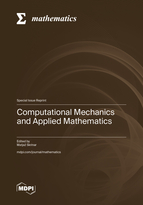Mathematical Modeling of the Floating Sleeper Phenomenon Supported by Field Measurements
Round 1
Reviewer 1 Report
Comments and Suggestions for AuthorsThe work present a modelling method for rail sleeper which can be used in other civil structure analysis.
This work proposes a mathematical model with as little degree as possible for the sleeper status degradation phenomenon. By comparing the experimental field measurement, the feasibility of the modelling is validated. However, the novelty of the method is not clearly stated. And the superiority of this method to SOTA research is expected. Several issues should be clarified are listed below.
1. The literature review in the introduction needs to be further expanded.
2. Based on the caption, the purpose of Figure 1 is to show the post-phenomenon of progression. However, poor and unclear illustrations are presented. It is suggested that arrows, circles, and words in the image should be used to emphasise the difference and critical attention points.
3. The full name of SDOF should be stated at the 1st use.
4. Figure 11 presents the accuracy of the modelling to experimental measurement. Can the author compare this accuracy with the SOTA models?
5. The author claimed ‘novel interlocked angle connectors’ in this work. What is the innovation and significance of this kind of connector?
6. The further work to improve this modelling method is indistinct.
7. References citing lists are too short. Several works related to rail maintenance should be considered. “An autonomous rail-road amphibious robotic system for railway maintenance using sensor fusion and mobile manipulator”.
The Quality of English Language of this paper is fine. Minor mistakes should be double checked.
Author Response
Please see the attachment.
Author Response File: ![]() Author Response.pdf
Author Response.pdf
Reviewer 2 Report
Comments and Suggestions for Authors1. The manuscript relies on a simplified SDOF model for analyzing the floating sleeper phenomenon. Could the authors elaborate on how the assumptions, particularly neglecting damping and adjacent structural elements, might affect the accuracy of the model in real-world applications? Would incorporating more complex multi-degree models provide better insight?
2. The authors present extensive field measurements, particularly the use of strain gauges and the Marini SMCV system. Could additional details be provided on how measurement uncertainties were handled? Were there any significant deviations or challenges encountered during the measurements that could impact the results?
3. The paper highlights the non-linear nature of the floating sleeper phenomenon, yet much of the analysis treats the system as linear in discrete time windows. Could the authors clarify how they ensured the validity of this linear approximation for highly non-linear behavior over time?
4. How does the manuscript differentiate between the simplified SDOF model and the more complex 2D or 3D models mentioned on page 2 (lines 25-29)?
5. What is the reasoning behind neglecting damping effects in the SDOF model for short-term pulse loadings, as stated on page 4 (line 106)?
6. On page 10 (lines 247-256), the Marini SMCV measuring system is used to evaluate the vertical load. What are the calibration standards for the system, and how were they applied in this study?
7. In Figure 9 (page 12), vertical normal stresses (σy) were measured during the locomotive's passage. Why is there a significant reduction in vertical stress from axle 1 (34.64 N/mm²) to axle 4 (18.25 N/mm²)?
8. On page 14 (lines 373-381), the dynamic factor for double pulse loading is noted to significantly increase. Can the authors explain what specific conditions lead to the highest dynamic factor of up to 2.5?
9. Page 5 (line 135) describes ballast material behaving like a liquid under high-cycle fatigue. Could the authors elaborate on the rate of wear and how it was measured during the study?
10. On page 15 (lines 388-392), the authors state that stiffness is significantly reduced due to ballast fouling. How did this reduction in stiffness correlate with the field observations, and was there a critical threshold identified?
11. Page 11 (line 307) notes that more loading was taken over by adjacent sleepers during axle 4's transition. How does this impact the overall integrity of the track, and were there long-term effects observed?
12. The test results indicate that stresses measured during the passage of train axles align well with triangular pulse loading models, but the explanation of deviations between axle 1 and axle 4 could benefit from more detailed discussion on adjacent sleeper interactions.
13. The authors state that ballast wear contributes significantly to the reduction of track stiffness, but the long-term implications of this wear on the safety and performance of railway tracks are not fully addressed.
Comments for author File: ![]() Comments.pdf
Comments.pdf
Author Response
Please see the attachment.
Author Response File: ![]() Author Response.pdf
Author Response.pdf
Round 2
Reviewer 1 Report
Comments and Suggestions for AuthorsThe authors have addressed all my comments and concerns. And the manuscript has been carefully improved. I suggest to accept the paper.






